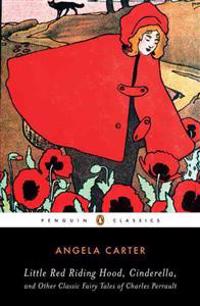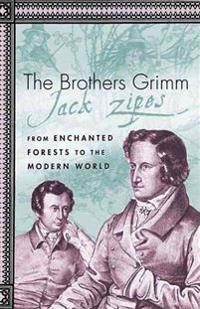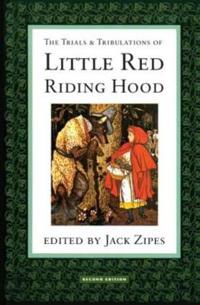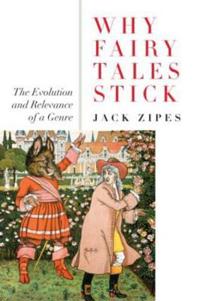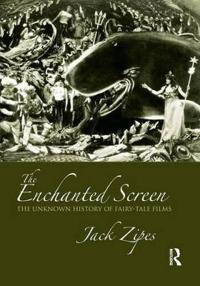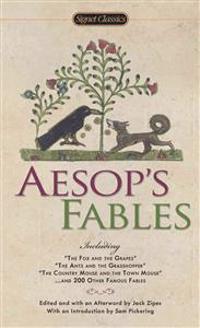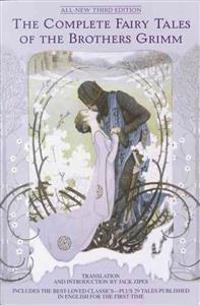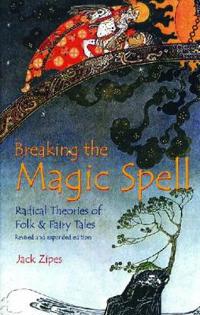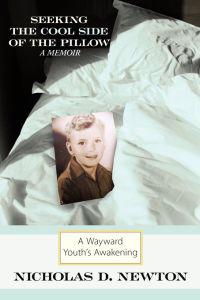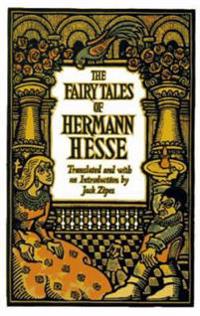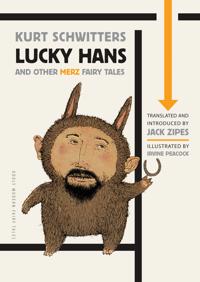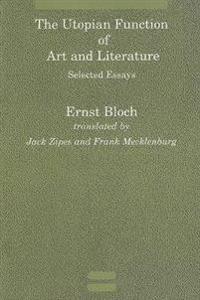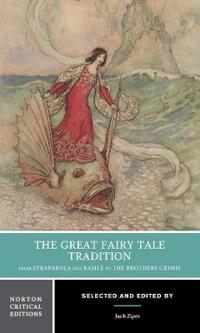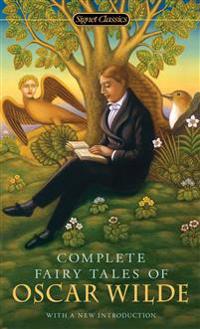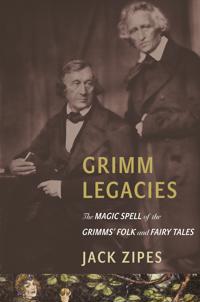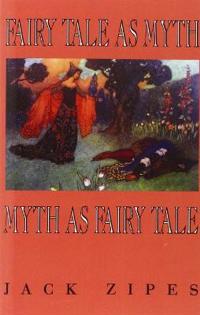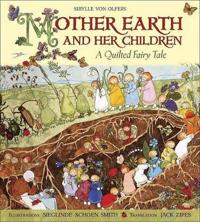Little Red Riding Hood, Cinderella, and Other Classic Fairy Tales of Charles Perrault (Häftad)
avAngela Carter, Jack Zipes
ISBN: 9780143105367 - UTGIVEN: 2008-06Ten beloved fairy tales, given new life by the one and only Angela Carter
Many classic fairy tale characters might not have survived into the present were it not for Charles Perrault, a seventeenth-century French civil servant who rescued them from the oral tradition and committed them to paper[...]The Brothers Grimm (Häftad)
avJack Zipes
ISBN: 9780312293802 - UTGIVEN: 2003-03Most of the fairy tales that we grew up with we know thanks to the Brothers Grimm. Jack Zipes takes us behind the romantics mythology of the wandering brothers. Zipes examines the interaction between the Grimms' lives and their work. He reveals the Grimms' personal struggle to overcome social prejud[...]
The Norton Anthology of Children's Literature: The Traditions in English (Häftad)
avJack Zipes, Lissa Paul, Lynne Vallone
ISBN: 9780393975383 - UTGIVEN: 2005-03The Norton Anthology of Children's Literature brings together the work of 170 writers and illustrators, tracing the historical development of genres and traditions over 350 years of children's literature in English. Drawing on new scholarship exploring the social and cultural contexts of children's [...]
Fairy Tales and the Art of Subversion (Pocket)
avJack Zipes
ISBN: 9780415610254 - UTGIVEN: 2011-09-01As Jack Zipes convincingly shows in this classic work, fairy tales have always been a powerful discourse, capable of being used to shape or destabilize attitudes and behavior within culture. How and why did certain authors try to influence children or social images of children?.[...]
The Trials and Tribulations of Little Red Riding Hood (Häftad)
avJack Zipes
ISBN: 9780415908351 - UTGIVEN: 199312This text presents the many faces of "Little Red Riding Hood". In tracing the evolution of the story, the author takes on those questions which other authors have shied away from: violation, rape, male fantasies and manipulation. This book collects 35 of the best versions of the story, from the firs[...]
Fairy Tales And The Art Of Subversion (Pocket)
avJack Zipes
ISBN: 9780415976701 - UTGIVEN: 2006-06-09The fairy tale may be one of the most important cultural and social influences on children's lives. This work shows that fairy tales have always been a powerful discourse, capable of being used to shape or destabilize attitudes and behavior within culture.[...]
Why Fairy Tales Stick (Storpocket)
avJack Zipes
ISBN: 9780415977814 - UTGIVEN: 200609In his latest book, fairy tales expert Jack Zipes explores the question of why some fairy tales "work" and others don't, why the fairy tale is uniquely capable of getting under the skin of culture and staying there. Why, in other words, fairy tales "stick." Long an advocate of the fairy tale as a se[...]
The Enchanted Screen (Storpocket)
avJack Zipes
ISBN: 9780415990615 - UTGIVEN: 201101The Enchanted Screen: The Unknown History of Fairy-Tale Films offers readers a long overdue, comprehensive look at the rich history of fairy tales and their influence on film, complete with the inclusion of an extensive filmography compiled by the author. With this book, Jack Zipes not only looks at[...]
Aesop's Fables (Pocket)
avJack Zipes, Samuel F. Pickering
ISBN: 9780451529534 - UTGIVEN: 2004-10"Kindness is seldom wasted."
--from "The Lion and the Mouse" It is both amazing and wonderful that so much of the richness of our language and our moral education still owes a huge debt to a Greek slave who was executed more than two thousand years ago. Yet "sour grapes," "crying 'wolf, '" "acti[...]Arabian Nights, Volume II: More Marvels and Wonders of the Thousand and One Nights (Pocket)
avJack Zipes, John Barth
ISBN: 9780451531483 - UTGIVEN: 2010-02Volume two in a collection of tales representing distinctive genres- from fairy tales to erotica-revealing the customs and societies in the medieval Middle East, as told by the mythic Sheherazade.
[...]Complete Fairy Tales of Brothers Gr (Häftad)
avJack Zipes
ISBN: 9780553382167 - UTGIVEN: 198001Now readers can enjoy the original, unabridged tales in this new third expanded edition of "The Complete Fairy Tales of the Brothers Grimm, " which includes the famous original tales plus rare tales omitted from the final edition, fascinating stories from the annotations of 1856, highly unusual text[...]
The Irresistible Fairy Tale (Inbunden)
avJack Zipes
ISBN: 9780691153384 - UTGIVEN: 2012-03-19Drawing on cognitive science, evolutionary theory, anthropology, psychology, literary theory, and other fields, this book presents a nuanced argument about how fairy tales originated in ancient oral cultures, how they evolved through the rise of literary culture and print, and how, in our own time, [...]
Breaking the Magic Spell (Häftad)
avJack Zipes
ISBN: 9780813190303 - UTGIVEN: 2002-08Folk and fairy tales pervade the everyday world to such a degree that we are sometimes unaware of their enormous influence on our behaviour. In the seven essays in this collection, Zipes discusses historically and critically the evolution of folk tales as fairy tales, their influence on popular beli[...]
Baba Yaga: The Wild Witch of the East in Russian Fairy Tales (Inbunden)
avJack Zipes, Helena Goscilo
ISBN: 9781617035968 - UTGIVEN: 2013-08Baba Yaga is an ambiguous and fascinating figure. She appears in traditional Russian folktales as a monstrous and hungry cannibal, or as a canny inquisitor of the adolescent hero or heroine of the tale. In new translations and with an introduction by Sibelan Forrester, "Baba Yaga: The Wild Witch of [...]
The Fairy Tales of Hermann Hesse (Pocket)
avHermann Hesse, Jack David Zipes, Jack David Zipes
ISBN: 9780553377767 - UTGIVEN: 199511A collection of twenty-two fairy tales by the Nobel Prize-winning novelist, most translated into English for the first time, show the influence of German Romanticism, psychoanalysis, and Eastern religion on his development as an author. Simultaneous.[...]
Lucky Hans and Other Merz Fairy Tales (Pocket)
avKurt Schwitters, Jack David (INT) Zipes, Jack David (TRN) Zipes
ISBN: 9780691160993 - UTGIVEN: 2014-04Kurt Schwitters revolutionized the art world in the 1920s with his Dadaist Merz collages, theater performances, and poetry. But at the same time he was also writing extraordinary fairy tales that were turning the genre upside down and inside out. Lucky Hans and Other Merz Fairy Tales is the first co[...]
The Utopian Function of Art and Literature (Pocket)
avErnst Bloch, Jack David Zipes, Frank Mecklenburg
ISBN: 9780262521390 - UTGIVEN: 1989-03These essays in aesthetics by the philosopher Ernst Bloch belong to the tradition of cultural criticism represented by Georg Lukacs, Theodor Adorno, and Walter Benjamin. Bloch's fascination with art as a reflection of both social realities and human dreams is evident in them. Whether he is discussin[...]
The Great Fairy Tale Tradition (Pocket)
avJack David (EDT) Zipes
ISBN: 9780393976366 - UTGIVEN: 2000-12Jack Zipes aims to disprove conventional wisdom regarding the origins of the Grimm fairy tales, which holds that the Grimms collected their tales from the oral tradition of peasants. He argues that the Grimms took most of their tales from literary sources, rewriting them again and again. These tales[...]
Complete Fairy Tales of Oscar Wilde (Pocket)
avOscar Wilde, Jack David Zipes, Gyles Brandreth
ISBN: 9780451531070 - UTGIVEN: 200810
The master of wit and irony
Published here alongside their evocative original illustrations, these fairy tales, as Oscar Wilde himself explained, were written "partly for children, and partly for those who have kept the childlike faculties of wonder and joy."
[...]Grimm Legacies (Inbunden)
avJack David Zipes
ISBN: 9780691160580 - UTGIVEN: 2014-11In Grimm Legacies, esteemed literary scholar Jack Zipes explores the legacy of the Brothers Grimm in Europe and North America, from the nineteenth century to the present. Zipes reveals how the Grimms came to play a pivotal and unusual role in the evolution of Western folklore and in the history of t[...]
Fairy Tale as Myth/Myth as Fairy Tale (Häftad)
avJack D. Zipes
ISBN: 9780813108346 - UTGIVEN: 1994-12Traces the history of the fairy tale, discusses its relationship with society, and looks at the interpretation of fairy tales in film and literature[...]
Mother Earth and Her Children (Inbunden)
avSibylle Von Olfers, Sieglinde Schoen (ILT) Smith, Jack David (TRN) Zipes
ISBN: 9781933308180 - UTGIVEN: 2007-10Mother Earth's children, who have been sleeping all winter, awake and experience the new life, color, and joys of spring.[...]

